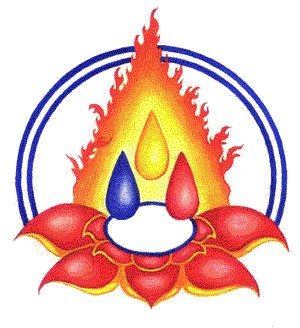Christianity and Buddhism both place great import on many of
the same issues. The two religions are fundamentally opposed to one another on
many of those issues, though. Some of these topics include love, freedom, and religious
communities.
Love for one another plays a positive role in both Christianity
and Buddhism. Both religions encourage it as and include it as a fundamental
doctrine. In Buddhism, this concept is often referred to as “infinite
compassion”. Thich Nhat Hanh, a “great Buddhist teacher”, states, “In the
Buddhist teaching, it’s clear that to love oneself is the foundation of love of
other people. Love is a practice.” In Buddhism, he says, love arises from
within oneself and the mastery of loving oneself. According to Buddhism, humans
are capable of love independently and must consciously strive to love.
Christianity takes a polarizing position here. Its doctrine says that love is
an unconditional gift from God, made possible by the Holy Spirit and made
present by Jesus Christ. Love is not within in Christianity, but rather it is
without. Love exists outside of us and is something we participate in. This
distinction is important because it indicates the essential difference between
what Buddhists consider to be the problem of existence (or rather that the see
existence as a problem) and the Christian problem of existence.
The role and definition of freedom are also integral in both
religions, but the distinction between Christianity’s and Buddhism’s take on
freedom is clear. In Christianity, freedom is used as a means to an end, and the
end is to “adhere to Being, and therefore to Christ.” Christians posit that
freedom allows us to enter into a pure and simplistic relationship with Christ,
free of tampering influences. One could say that freedom allows the Christian
to participate in life more fully. The type of freedom described here is a
freedom from the structures and systems of power that man creates and an
in-tune-ness with one’s desires. Similar, but clearly distinct, is Buddhist
freedom. Buddhist freedom also means to be free from the structures and systems
of power, but goes further and says that freedom is also a complete uprooting
of desire. A “free” Buddhist is not more in tune with his desires, but rather
completely removed from them. This definition of freedom plays into the role of
freedom in Buddhism: freedom is the end, not the means. Rather than seeking
freedom for the sake of helping one achieve greater life, a Buddhist seeks
freedom simply to be free. Free from suffering, desire, and the self, and
finally embracing the “non-self”.
Finally, religious communities exist in both Christianity and
Buddhism to aid men and women on their spiritual journeys, but the type of aid
they provide is different. In Christianity, communities make Jesus present in
the world. They exist for the purpose of others, both in the sense that each
individual member must be as concerned for his neighbor’s salvation as he is
for his own, but also in the sense that these communities bring the love of
Christ into the world, benefitting people outside the community
(evangelization, community service, social relief, etc.). Buddhist communities
are quite the opposite. Thich Nhat Hanh harps on the personal benefits of the
sangha, such as “the transformation and healing [taking] place more quickly.”
He also says that mindfulness, concentration, and joy are more powerful in the
sangha, all things used for personal enlightenment. The essence of the sangha
is not to care for the journey of everyone else before oneself, but rather to
facilitate one’s own journey through membership in the community.
All of these differences are easily overlooked and may even
seem superficially insignificant, but they are closely tied to the fundamental
difference between Christianity and Buddhism, being that Buddhism views
existence as suffering while Christianity views it as an opportunity to take
part in infinite truth, beauty, and love in the person of Christ. This
fundamental difference is what one must take into consideration when analyzing
religions or deciding what religion to participate in.




